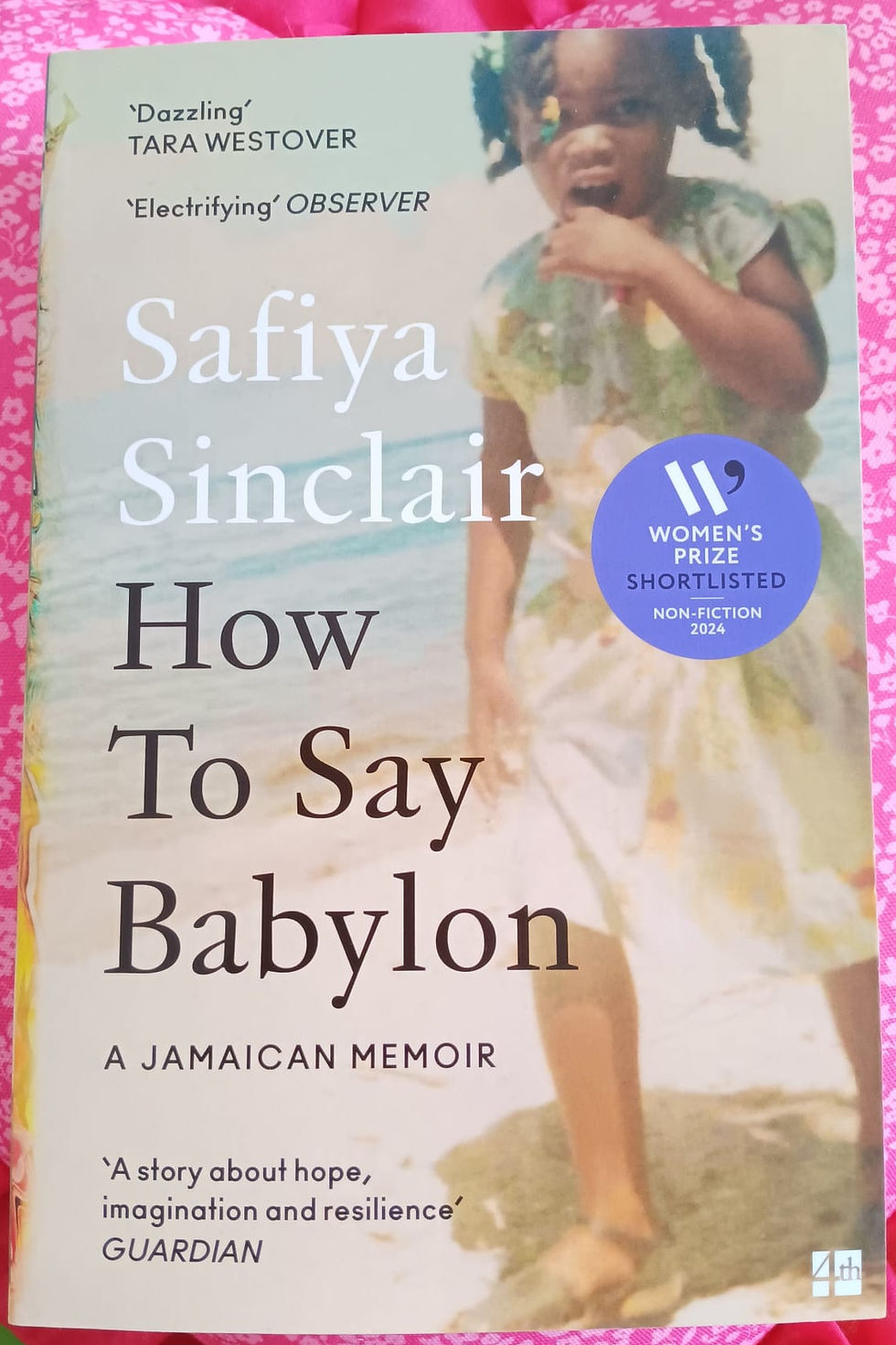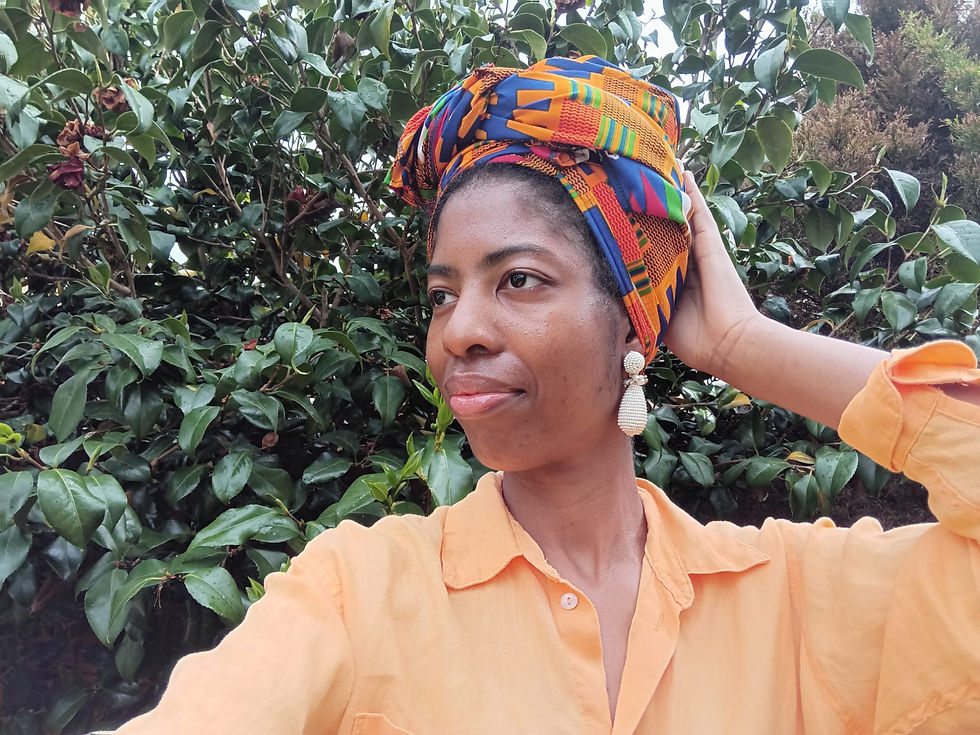BOOK REVIEW: BIG DRESS ENERGY by Shakaila Forbes-Bell
- booksandjoyfulness
- May 7, 2024
- 6 min read
Big Dress Energy – How Fashion Psychology Can Transform Your Wardrobe and Your Confidence
by Shakaila Forbes-Bell:
“…clothes can have profound and systematic psychological and behavioral consequences for their wearers.”[1]
As many people know, I am a fashion lover. I love the joy I feel in putting together outfits that really speak to the core of my being. I love expressing the joyfulness and pride in Self that lives in my soul through the clothes I wear. I love the planning of an outfit for an event in my mind’s eye; assembling clothes and jewellery next to each other to see what works and the fun and escapism that comes with the joyfully laborious process of putting on my outfit and make-up: a cycle that I am only too happy to repeat again and again when the next event invitation calls. I certainly believe there is a relationship between our emotional state and the clothes we wear and that one can influence the other. I believe we can emanate Big Dress Energy and self-actualisation through whipping up outfits and walking into rooms with our heads held high.
In my opinion, having Big Dress Energy is about having power - personal power. It’s about having ultimate control and ownership over yourself and using fashion as one of the tools to build personal power. With each outfit, we use fashion as one of the tools to chip away at redundancy and carve out our best and most authentic selves. Forbes-Bell shows us how this can be done.
In Big Dress Energy, Shakaila Forbes-Bell shows us how we can use fashion to exude confidence and approach fashion with more mindfulness, helping us to have a better quality of life. When I heard about Shakaila Forbes-Bell, the “first Black person to earn a master’s degree in Psychology for Fashion Professionals at the London College of Fashion”[2] through an article I read online, I knew I had to read her book. I was intrigued by and in awe of her bravery to carve out a career in a niche field.
Big Dress Energy has nine chapters and I appreciate how each chapter addresses a specific aspect of fashion psychology such as colour psychology; how clothes can influence our thoughts and actions; mindfulness and our wardrobe and fashion and science[3]. All of the chapters of this book have been either extremely eye opening or a confirmation of what I know to be true through personal experience.
I want to highlight four techniques Forbes-Bell uses that heighten the effectiveness of Big Dress Energy and help us to ultimately embrace the power of Big Dress Energy in our own lives:
- Combining scientific study and fashion
- Conversational, chatty friendly tone
- Structure of chapters: Providing clear conclusions and key takeaways at the end of every chapter
- Colour Psychology
Combining scientific study and fashion:
Forbes-Bell mixes science with fashion at many instances in her work but I wish to highlight a study by Hajo Adam and Adam Galinsky that is the essence of my belief about fashion - that fashion has the power to affect how we feel and our performance and that wearing clothes associated with certain functions can also affect us psychologically. Have you ever wondered why your mood, demeanour and performance can change depending on what you wear? In Chapter four, Forbes-Bell explains that clothes have the power to change thoughts and actions[4] and provides us with the phrase for this occurrence called ‘enclothed cognition’ which was coined by psychologists Hajo Adam and Adam Galinsky in their 2012 paper entitled Enclothed Cognition.
In their research, Adam and Galinsky propose that “…enclothed cognition involves the co-occurrence of two independent factors—the symbolic meaning of the clothes and the physical experience of wearing them.”[5] Adam and Galinsky show that the meaning we ascribe to clothes and the experience of actually wearing them can affect our performance on certain tasks and used a lab coat as an example. They found “wearing a lab coat leads to increased selective attention on a Stroop task”[6] and that “wearing a lab coat leads to increased sustained attention on a comparative visual search task and that this effect depends on both whether the clothes are worn and the symbolic meaning of the clothes…”[7] In other words, wearing a suit may make us feel more powerful and inspired to work because of the physical experience of wearing the suit and the likelihood that we associate wearing a suit with professionalism and productivity. I believe we can use the concept of enclothed cognition to help change our mindset, performance and ultimately embrace the power that comes from Big Dress Energy.
Conversational, chatty friendly tone and identifiable pictures:
Forbes-Bell uses formal language, but peppers chapters with popular phrases or references to popular culture which I really valued as a millennial. The author uses phrases such as ‘who dis’, ‘it’s giving’, a quote from Cardi B and the classic ‘get in loser, we’re going shopping’, a well-known quote from the iconic film Mean Girls. These quotes add touches of humour and lightness and help to mix Forbes-Bell’s obvious competence with warmth, a technique discussed by Amy Cuddy in her book Presence (please read my last book review!) Cuddy describes how we can see people as “warm and competent – lovable stars”[8] and explains that “the latter is the golden quadrant, because receiving trust and respect from people allows you to interact well and get things done.”[9] Forbes-Bell exudes what I would describe as literary presence in her work by combining the competence of study, quotes and research and the warmth of popular cultural references which increases the reader’s trust in the ideas and concepts Forbes-Bell explains.
Forbes-Bell begins chapters with design sketches. As a Caribbean millennial, I particularly loved the vibrant and joyful image of a woman in Carnival costume at the beginning of Chapter one. These images add to the general accessible nature of this book. Perhaps adding pictures of men and people of other genders would have been helpful to showcase the accessibility and relatability of fashion even further. However a read of this excellent book shows Forbes-Bell’s concern, interest and commitment to diversity.
The professional yet conversational tone used by Forbes-Bell in her book makes the reader feel they can trust the ideas Forbes-Bell proposes and promulgates. The reader can believe that the ideas provided and presented warmly can help them achieve the ultimate goal of dressing to improve confidence and wellbeing and having a stronger connection with clothes, thus having Big Dress Energy.
Structure of chapters: Providing clear conclusions and key takeaways at the end of every chapter
Chapters have a clear structure. Forbes-Bell provides a chapter heading and subheadings, a brief sentence summary of what the chapter is about and a section at the end of the chapter which I found to be especially effective called Key takeaways where the main points of the chapter are summarised in brief but effective bullet points. The key takeaways are a reminder and an extension of the sentence summary at the beginning and what has been discussed throughout the chapter. This helps to guide the reader to the main points of each chapter that essentially show us how we can develop Big Dress Energy. These key takeaways are separated from the rest of the chapter by a box which helps the reader remember tips at a glance.
Colour Psychology:
In Chapter 3, Forbes-Bell gives us a deep dive into Colour Psychology: what different colours are associated with and when the best times are to wear different colours. Forbes-Bell shows us that orange is a dynamic and vibrant colour and explains when this colour is appropriate to wear. I think the colour orange is perfect for strutting into rooms and commanding attention. I note that this author has chosen to use green as the dominant colour for her book. The front cover (although other colours are present and very visible) is green and green is the colour used throughout the book for subheadings, chapter headings, quotes and more. In this chapter, Forbes-Bell tells us that green is associated with balance and creativity. I certainly found this book to be a very informative and calming read, especially as green is associated with nature.
To conclude, this book is packed to the brim and flourishing with rich study; excellent and expert fashion advice; an effective reliable structure; effective use of colour and a conversational tone steeped in pop culture that gives it a simultaneous relevance and timelessness that I greatly appreciate. Forbes-Bell ultimately shows us how to use fashion to become more self-actualised. This book is fundamentally about the link between fashion and personal power – personal understanding. No human position of power is permanent but we as individuals can use fashion to build personal power. Big Dress Energy is about becoming more YOU and being the best ‘you’ you can be. I look forward to reading more from Shakaila Forbes-Bell and hearing more studies about fashion psychology and how we can continue to walk in the power of Big Dress Energy.
To our next outfits!
[1] Quote from Enclothed Cognition by Hajo Adam and Adam D. Galinsky abstract, Journal of Experimental Social Psychology, Volume 48, Issue 4, July 2012.
[2] Big Dress Energy How Fashion Psychology Can Transform Your Wardrobe and Your Confidence by Shakaila Forbes-Bell, beginning page.
[3] Ideas taken from Ibid.
[4] Idea taken and paraphrased from Ibid, Chapter 4, page 82.
[5] Quote from Enclothed Cognition by Hajo Adam and Adam D. Galinsky abstract, Journal of Experimental Social Psychology, Volume 48, Issue 4, July 2012.
[6] Quote from Ibid by Hajo Adam and Adam D. Galinsky Section snippets, Journal of Experimental Social Psychology, Volume 48, Issue 4, July 2012.
[7] Quote from Ibid by Hajo Adam and Adam D. Galinsky Section snippets, Journal of Experimental Social Psychology, Volume 48, Issue 4, July 2012.
[8] Presence by Amy Cuddy, Chapter 3 page 72.
[9] Ibid, Chapter 3 page 72.





Loved reading your review on Big Dress Energy, i appreciated your personal take on the effect getting dressed up has on you as well as your thoughts on the scientific studies. Looking forward to seeing you strut your stuff in even more gorgeous outfits.